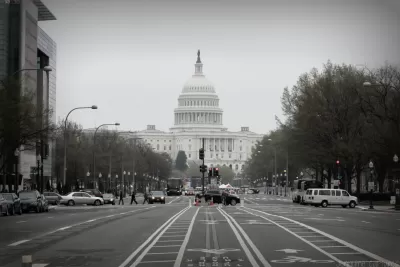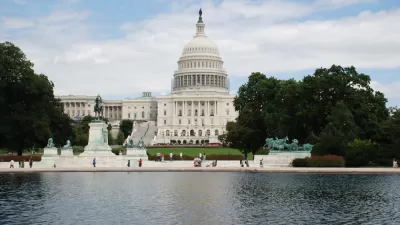A few last minute changes were included in the version of the COVID-19 Emergency Relief Act of 2020, approved by Congress last night.

A Twitter thread by APA Advocates calls attention to the inclusions in the COVID-19 Emergency Relief Act of 2020, approved by Congress on Monday of this week.
The Twitter thread includes a breakdown of spending included in the $900 billion stimulus package, including $14 billion for public transit agencies (down from the $15 billion that was considered in negotiations), $10 billion for state departments of transportation, and $1 billion for Amtrak.
In terms of the real estate market and the looming eviction and mortgage crisis facing many Americans, the bill includes $25 billion in emergency assistance to renters and extends the federal eviction moratorium until January 31.
The Twitter thread lists a few other of the funding allotments included in the bill, while also noting what's missing, namely, direct relief for local and state governments.
One key inclusion of note that might seem like a wildcard: the bill included the Water Resources Development Act, which "expands #resiliency, green infrastructure & #EnvironmentalJustice provisions; a modified energy bill that expands clean energy; and a climate measure," according to APA Advocates.
More discussion of the relief bill can be found at the #coronabus hashtag on Twitter, and Planetizen will continue to provide updates of the most informative analysis and commentary on the bill.
FULL STORY: The bipartisan #COVID19 relief deal Congress passed last night...

Trump Administration Could Effectively End Housing Voucher Program
Federal officials are eyeing major cuts to the Section 8 program that helps millions of low-income households pay rent.

Planetizen Federal Action Tracker
A weekly monitor of how Trump’s orders and actions are impacting planners and planning in America.

Ken Jennings Launches Transit Web Series
The Jeopardy champ wants you to ride public transit.

‘Minnesota Nice’ Isn’t so Nice When You Can’t Find a Place to Live
The Economic Development and Housing Challenge Program can help address the scourge of homelessness among Indigenous people.

NYC Open Streets Organizers Call for City Support
The number of open streets projects has dropped year after year as volunteer groups struggle to fund and staff them.

Crime Continues to Drop on Philly, San Francisco Transit Systems
SEPTA and BART both saw significant declines in violent crime in the first quarter of 2025.
Urban Design for Planners 1: Software Tools
This six-course series explores essential urban design concepts using open source software and equips planners with the tools they need to participate fully in the urban design process.
Planning for Universal Design
Learn the tools for implementing Universal Design in planning regulations.
Heyer Gruel & Associates PA
Ada County Highway District
Institute for Housing and Urban Development Studies (IHS)
City of Grandview
Harvard GSD Executive Education
Toledo-Lucas County Plan Commissions
Salt Lake City
NYU Wagner Graduate School of Public Service





























